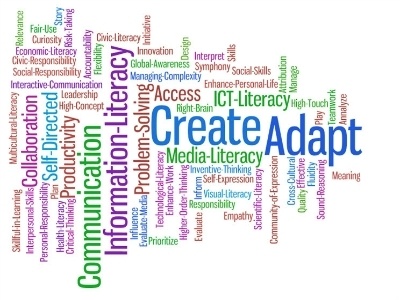Top 14 Learning Management System Trends For 2014
Amidst the technological tempestuous evolution that takes us on an awe-inspiring journey through new automations, inventions, and machines, following our continuous quest and concern to save money and make our lives easier and upgradable, eLearning Industry does not appear to be just another market in transition, but a beacon of inspiration and innovation. In a world that continuously experiences multidimensional changes, the Learning Management Systems (LMSs) wouldn’t have any other choice but to jump on the bandwagon. An LMS allows for information to be shared between students and faculty and provides access to content and administrative features, creating a unique environment that can supplement in-class activities, empower learning, and boost engagement. Thus, it becomes abundantly clear that the technological evolution couldn’t but profoundly change LMSs through time, generating equally profound changes in the eLearning field.
Which are the Top trends in LMSs and what’s their impact?
So, let’s see what are the Top inspiring trends in the field of Learning Management Systems and evaluate their impact.
1. Cloud-based LMS
Not exactly a nebulous technology used strictly by large enterprises, but a powerful tool that can advance the educational system, by cutting costs and expanding accessibility. Training becomes available at any time from any place, administrators’ efficacy is boosted, learners can share ideas, infrastructure, and tools. In addition, there are no time limits for information storage, while schools and businesses can effectively tame expenditures. Need I say more? You may want to check the Top Benefits of Using a Cloud-based LMS and the Ultimate List of Cloud-Based Learning Management Systems.
2. No Vendor Lock
The Open Source LMS model served the eLearning industry expansion for over one decade. Blending the best from Open Source and commercially supported word, the current trend is the “no vendor lock” model where, under a commercial license and support, the vendor opens the code for the client. Giving companies the chance to extend and customize their LMS without worrying for proprietary barriers, this trend offers better flexibility, unlimited customizability and guarantees service continuity.
3. Mobile learning
Last year, LMS providers realized they had to implement mobile functionalities and started using HTML5 to make their websites mobile accessible. According to a recent survey, a smashing percentage of 88% of respondents said that they absolutely need mobile learning capabilities for their tablets, and this can mean one thing. In addition, Bring Your Own Device (BYOD) support is on the rise. In 2013, Cisco’s BYOD Insights report revealed that 9 in 10 Americans already use their smartphones for work purposes. I highly encourage you to check What BYOD Means for e-Learning. In 2014, emphasis will be placed in the creation of native apps, and not just browser apps, in an effort to increase the opportunity for learning for all learners. Surely, HTML5 will play a pivotal role in this. A few months ago, I answered the question: Is HTML5 ready for the eLearning Industry? in a brief article that you may want to read. In addition, numerous Authoring Tools Vendors’ have created HTML5 e-Learning Authoring Tools, and others will certainly follow. If you want to take a look at how HTML5 may play a major role in the future of the eLearning industry, and delve into the ultimate list of HTML5 eLearning authoring tools available today, you may find interesting the Ultimate List of HTML5 eLearning Authoring Tools.
4. Content Reusability
Content reusability is definitely a new trend with great potential. LMSs that integrate conversion functionalities allow you to convert documents, videos and audios to web and mobile compatible formats. In other words, you can reuse certain content as many times as needed, in various different ways without losing its validity, power, and meaning.
5. Talent management
Talent management is crucial for successful organizational development and was recently found to be a valuable tool for LMS, as well. Talent management identifies the strengths and weaknesses of employees, and with the appropriate LMS these weaknesses can be improved, with the suggestion of new eLearning courses, training material, or even external tailor-made resources that will advance the learner’s job-related skills.
6. Emphasis on User Experience (UX)
Providing a great user experience is an imperative goal for every eLearning Software and course. The importance of UX has been widely accepted and recognized and the increasing focus on customer and user centric software leaves no doubt that UX is a new emerging field of competition amongst the LMS providers. UX practitioners and researchers have proposed new ways (metrics, methods, strategies) so as to effectively measure and improve UX. On the other hand, eLearning Professionals, Instructional Designers, and Instructors, need to take advantage of the recent UX advancements and have to fully adopt this UX paradigm in order to design and develop authentic learning experiences. I highly encourage you to read the What Is The Importance Of eLearning Usability? article.
7. Personalized Learning
Following the need to provide better and more holistic user experience, there is an increasing demand to give more control to the end users. It is evident that while learners mature as users and creators of digital artifacts, they want to interact with learning environments that meet their need for autonomy and control. In addition the realization of the vision for learning ecosystems that can be adjusted to the learners’ needs is yet to come. With the advance of adaptive learning technologies I anticipate that LMS will be further developed in order to incorporate such new technologies.
8. Gamification
Gamification is the new buzzword in the eLearning industry. Gamification is the use of game thinking and mechanics in a non-game context to inspire employees and students to get engaged in the learning process. Gamification have taken corporate training to a whole new level, by facilitating learner engagement, reducing the stress associated with learning, and boosting the information’s durability. It is more than obvious that LMS providers should implement Gamification features to their LMS solutions. If you are interested to know the most effective uses of Gamification in Learning, I highly encourage you to read the Free eBook How Gamification Reshapes Learning.
9. Social Learning
Social learning made an explosive entrance in the eLearning Industry. Social learning creates better LMS environments, encourage learning, facilitate communication and enable sharing. When you compare the percentage gained from formal learning to the percentage gained through collaboration with others, it’s no wonder that social learning is rapidly gaining corporate buy-in and employee appreciation (Social Learning Trends 2013).
10. Micro-Learning
There are a variety of benefits associated with Micro-learning, particularly in eLearning environments. In essence, micro-eLearning offers students and employees the opportunity to more easily absorb and retain the information that is being offered, by making lessons and course activities more manageable and “digestible”. Yes, you can integrate Micro-eLearning techniques into your eLearning course however; it would be great if more LMSs had micro-learning features build in!
11. Scenario-Based Learning
Scenario-Based eLearning, essentially, immerses the learners in real life or situational simulations or learning experiences that allow them to gather skills or information that they will recall for future use. Information offered within a contextual setting enables learners not only to easily manage it within their working memory, but also to commit it to their long-term memory. As an eLearning Professional it would not be hard to apply scenario-based learning at your eLearning courses. However, scenario-based prebuilt features on your LMSs will save you valuable time! You may want to check The Basics of Scenario-Based e-Learning.
12. Tin Can API
Introduced in 2012, Tin Can API will definitely be the tool that will grow exponentially in 2014, because it has the potential to radically transform the learning landscape. Training and learning now becomes trackable, allowing organizations to measure results, correlate productivity data with training data, and evaluate employee/learner performance, while learners can store their learning information. You may want to read How Tin Can is Making Tools Better, Together.
13. MOOCs
Massive Open Online Courses are expected to explode in 2014. With tuition rising, universities desperately seeking to cut down costs, government funding plummeting, and space becoming limited by the minute, MOOCs sound more like deus ex machina, enabling access to learning for millions of people simultaneously and globally. If Harvard, MIT and Georgetown are doing it, it looks like this trend is here to stay.
14. Just-In-Time Learning
The concept is the provision of a learning solution when is needed, and not on a deferred basis, through webinars, web-based tutorials, video games, and quizzes. It eliminates the need to refresh training, and it’s accessible immediately, zeroing in on the information needed to perform tasks, update skills and solve problems. Many companies have already adopted this method, allowing their employees to obtain just-in-time training through the system, contact experts who might be able to help them out with specific projects, and even share lessons learned. LMSs, however, need to be mobile and flexible in order to be compatible with JIT learning.
There are numerous Learning Management System trends and many others are still to come since eLearning Industry is rapidly changing! So, whether you are an eLearning Professional or an LMS provider you should always be aware of the latest eLearning trends’ concepts, features, and benefits.
If you have not done so yet, we highly encourage you to take 10 minutes to complete The Learning Management Systems’ Quality Evaluation Survey - (https://www.surveymonkey.com/s/LMSs-Quality-Evaluation-Survey). The survey will be open until May 10th, 2014. Thank you in advance for helping us shed some light on the Quality Evaluation of Learning Management Systems. Your input is truly invaluable!









